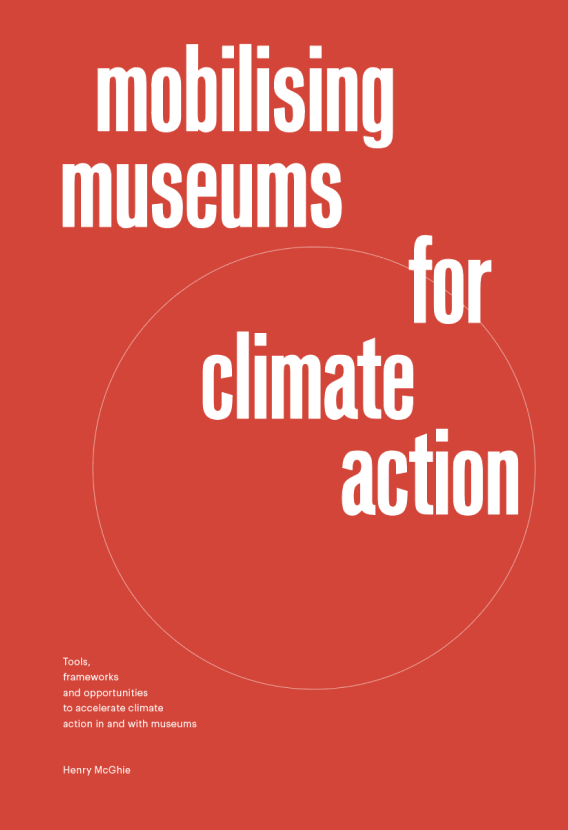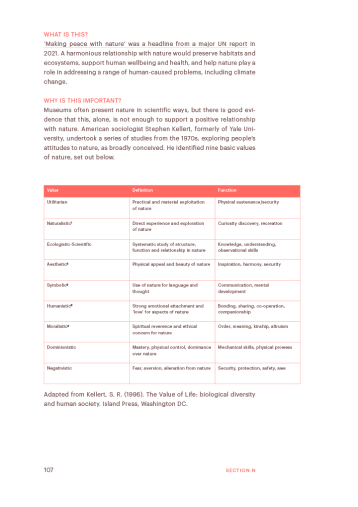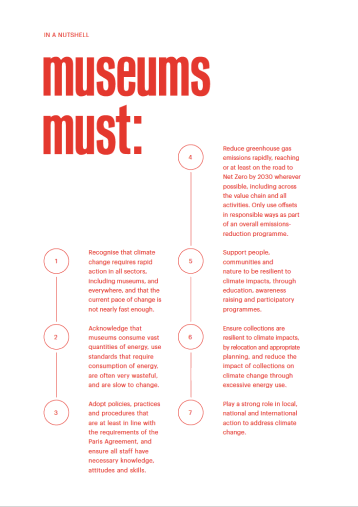Reducing greenhouse gas emissions: climate mitigation
( Toolbox )
WHAT IS THIS?
Climate mitigation means “A human intervention to reduce emissions or enhance the sinks of greenhouse gases.”
WHY IS THIS IMPORTANT?
As climate change is largely caused by changing the composition of the atmosphere, mitigation is fundamental to climate action, both in terms of reducing emissions and enhancing nature’s ability to absorb emissions.
There are seven greenhouse gases covered by the Kyoto Protocol: carbon dioxide (CO2), methane, nitrous oxide and four fluorine gases. The fluorine gases are a lot rarer than carbon dioxide, but are especially powerful greenhouse gases. Although not a greenhouse gas, black carbon (soot) is also responsible for global heating as it absorbs heat.
Climate mitigation can be thought of as consisting of two main activities:
1. Reducing greenhouse gas emissions, either by reducing activity that creates them, increasing efficiency of processes that produce them, or by shifting to alternative fuels that do not produce greenhouse gases.
2. Removing CO2 and other greenhouse gases from the atmosphere, called Carbon Removal Methods. These include Natural Carbon Removal Methods (enhancing soils, oceans, wetlands, planting trees); Technological approaches (e.g. Carbon Capture and Storage); or hybrid approaches (Climate Engineering/Geoengineering)¹. They include²:
- Agroforestry, which combines tree-growing with agriculture.
- BECCS: Bioenergy with carbon capture & storage.
- Biochar, which creates charcoal from biomass and adds it to soil; it is stable for thousands of years.
- Blue carbon, that is, restoring and expanding peatlands and wetlands.
- Direct air capture, Direct Air Capture With Carbon Storage (DACCS) involves technology to remove gases from the air and store them in reservoirs or in a stable form.
- Enhanced mineralisation, accelerating processes that absorb CO2 as minerals and rocks (e.g. olivine, basalt) weather into different forms, and/or adding certain minerals to the soil to do so.
- Forestation, includes afforestation, reforestation and forest restoration; restoration provides greater biodiversity benefits that monoculture plantations.
- Mass timber construction (building using wood-based rather than cement/concrete-based methods).
- Ocean alkalinisation, adding minerals and rocks (e.g. olivine) that increase the formation of stable carbon compounds, and cause the ocean to absorb more CO2.
- Soil carbon sequestration, or ‘carbon farming’, switching to farming methods that support the soil’s ability to store carbon, and reduce use of fertilisers.
Typical thematic areas for mitigation activity are:
- Energy: reducing greenhouse gas emissions through reduction in energy use, energy efficiency, and using renewable energy sources.
- Transport: reducing the volume of transport, distances involved in transportation, and forms of fuel used in transportation.
- Buildings: through use of low emissions materials, preservation, reuse and upgrading of existing buildings.
- Industry: through the forms of goods and services produced, and energy consumed in their production and distribution.
- Waste management: through prevention of waste by reduction in consumption, reduction of waste through reuse.
- Agriculture, forestry, and other forms of land management: strengthening nature’s ability to absorb carbon, and ensuring agricultural and other management practices support the absorption of greenhouse gases, and prevent their emission into the atmosphere, for example by preventing nitrous oxide emissions resulting from fertiliser use, and reducing dairy animals.
Headline actions for reducing greenhouse gas emissions:
Carbon dioxide: rapidly move away from fossil fuels throughout all activities, including heating, cooling, transport, and visitor travel. Increase efficiency of equipment, although this is not a substitute for using renewable energy sources. Reduce emissions by reducing general consumption: use less and waste less.
Methane and Nitrous oxide: transition towards food use that is based on vegetables rather than meat and dairy products. Ensure food waste does not go to landfill, to avoid methane production through decay processes.
Fluorine gases: reduce reliance on electrical goods including screens. Ensure redundant equipment is safely disposed of to ensure gases do not pollute the atmosphere.
Climate Mitigation: measure, reduce, contribute, report
The UNFCCC’s Climate Neutral Now initiative is based on a four-step approach to greenhouse gas reductions:
- Measure: quantify your emissions, and identify their main sources.
- Reduce: identify potential reductions, plan and implement actions.
- Contribute: choose a project that supports sustainable development, and contribute towards it (offset).
- Report: assess results and revise, communicate and share progress.
Greenhouse gas emissions are measured in three ‘Scopes’. For museums, these would mean:
Direct emissions (known as Scope 1): from onsite combustion of fossil fuels in heating and cooling, and fossil fuels used by fleet vehicles.
Indirect emissions (Scope 2): from purchased electricity and steam, in terms of the emissions produced in the production of that energy.
Optional emissions (Scope 3): Examples include employee business travel and commuting, consumption of goods and services, which includes visitor travel to museums, investments and waste management.
Scope 3 emissions are the most difficult to measure and control, but they typically make up the largest part of emissions for medium or large businesses and organisations, often over 80% of total emissions, so need to be addressed.
WHAT THIS MEANS FOR MUSEUMS
Scope 1 and 2 emissions are relatively easy to deal with, at least in theory, by rapidly shifting away from fossil fuels in heating, energy and transport, and changing working practices and standards that use these, or that are inefficient. The actions to take are really very clear.
There are 15 categories of Scope 3 emissions, which museums can act on as follows:
| Category | Description | Possible activities for museums to implement | |
|---|---|---|---|
| 1 | Purchased goods and services | emissions from the production of products purchased or acquired | purchase less goods and services: consume less, purchase low or, ideally, zero carbon goods and services |
| 2 | Capital goods | emissions from the production of capital goods | purchase second-hand capital goods (e.g . vehicles, equipment), purchase less capital goods through greater sharing of resources |
| 3 | Fuel and energy-related activities | emissions related to the production of fuels and energy purchased and consumed | switch to renewable energy sources, maximise energy efficiency, consume less energy, change environmental requirements to be more in keeping with Paris Agreement targets, and where environmental controls are absolutely necessary in collections stores and exhibitions, implement them through targeted localisation |
| 4 | Upstream transportation and distribution | transportation and distribution of products purchased | purchase less products, reduce transportation emissions by insisting on low or, ideally, zero carbon emissions transport, maximise efficiency of transportation |
| 5 | Waste generated in operations | emissions from third-party disposal and treatment of waste generated | consume less to produce less waste, enhance sharing and reuse of resources to minimise waste production |
| 6 | Business travel | emissions from the transportation of employees for business-related activities | reduce business travel emission, notably through reducing business travel (not just Business Class, all business travel) and replacing with online meetings |
| 7 | Employee commuting | emissions from the transportation of employees between their homes and their worksites | provide employees with support (season ticket loans) to use public transport, encourage and empower employees to work from home |
| 8 | Upstream leased assets | emissions from the operation of assets that are leased (e.g. storage in buildings owned by others) | reduce the need for leased assets, by prioritising disposal and or/dispersion of low quality or un-used assets, and greater sharing of assets among partners to reduce the need for storage |
| 9 | Downstream transportation and distribution | emissions from transportation and distribution of sold products in vehicles and facilities owned by other. | reduce travel resulting from museum activities, including loans, touring exhibitions, and where travel cannot be reduced, reduce the emissions by choosing low-emissions transportation methods, and through collaboration to ensure the effectiveness of travel itineraries |
| 10 | Processing of sold products | emissions from processing of sold intermediate products by third parties subsequent to sale | reduce emissions by reducing the number and impact of touring exhibitions, reduce emissions involved in production of e.g. publications and other merchandise |
| 11 | Use of sold products* | emissions from the use of goods and services sold [includes free goods and services] | reduce emissions associated with visitor travel to museums, reduce emissions associated with visitor experience in museums |
| 12 | End-of-life treatment of sold products | emissions from the waste disposal and treatment of products sold [or otherwise produced] | reduce emissions from waste from e.g. temporary exhibitions through reducing their production, minimising construction, increasing sharing of resources with other museums and other organisations, and by prioritising easily disposable and biodegradable materials |
| 13 | Downstream leased assets | emissions from the operation of assets that are owned by the reporting organisation | reduce the number of assets leased (where there are any) |
| 14 | Franchises | emissions from the operation of franchises (e.g. book production or distribution, marketing distribution) | ensure that any franchised operations prioritise sustainable practices in line with Paris Agreement targets |
| 15 | Investments | emissions associated with the reporting company’s investments (e.g. activity related to endowments, pension funds, bank accounts) | ensure investments of all kinds are directed towards sustainable development, eliminating support and benefit from activities that are socially and environmentally damaging; partnerships and relationships may be considered as a form of investment |
(*) Downstream emissions are “Indirect GHG emissions from sold goods and services. Downstream emissions also include emissions from products that are distributed but not sold (i.e., without receiving payment)”, which would include e.g. emissions involved in people travelling to visit museums. https://ghgprotocol.org/sites/default/files/standards/ Corporate-Value-Chain-Accounting-Reporing-Standard_041613_2.pdf
MEASURING GREENHOUSE GAS EMISSIONS: TOOLS AND RESOURCES
Producing a full carbon footprint can seem daunting, but there are many tools available to do just this. The most important things to note are that they use a clear and transparent methodology, and that results are reported in a clear and transparent way.
The ‘Corporate Value Chain (Scope 3) Accounting and Reporting Standard’, or ‘Scope 3 Standard’ for short, allows companies to assess their entire value chain emissions impact and identify where to focus reduction activities.
The Scope 3 Standard is accompanied by the Scope 3 Guidance, which gives detailed information on each of the 15 categories.
The Scope 3 Evaluator tool is a free online tool from the Greenhouse Gas Protocol and Quantis that makes it easier for organisations to measure, report, and reduce emissions throughout their value chain.
The Climate Toolkit provides guidance notes for museums on many aspects of reducing greenhouse gas emissions, with case studies on how US museums and botanic gardens are already reducing their carbon footprint.
There are a number of initiatives that museums can participate in to make commitments and measure, reduce and offset their emissions in responsible ways:
The UNFCCC Climate Neutral Now encourages organisations to make a commitment to reduce their greenhouse gas emissions, with a four-step approach: measure, reduce, report and contribute. Over 400 organisations take part. Their participation is formally recognised by the United Nations.
The Science-based Targets Initiative (SBTi) drives ambitious climate action in the private sector by enabling companies [but open to organisations of all kinds] to set science-based emissions-reduction targets.
The SME Climate Hub is based around a commitment to reduce greenhouse gas emissions by 50% by 2030 and Net Zero by 2050, and to report on a yearly basis. Museums can take part in the SME Climate Hub, and so join the Race to Zero campaign. The SME Climate Hub has a repository of tools to help organisations to measure, reduce and offset their emissions.
Julie’s Bicycle has developed a set of online tools, the ‘Creative Green Tools’, that cultural organisations can use to calculate their greenhouse gas emissions. The Tools are used by over 3,000 organisations in 50 countries.
The ICCROM Our Collections Matter Toolkit contains many tools that can help collections-based organisations plan and deliver sustainable development action, including climate mitigation activities.
CiMAM (International Committee for Museums and Collections of Modern Art) has developed a Toolkit on Environmental Sustainability in the Museum Practice.
Ki Culture have developed a set of ‘Ki Books’ dedicated to particular sustainability themes, including waste reduction and energy.
A WORD ON NET ZERO
Many organisations are declaring their intention to become ‘Net Zero’, meaning that they intend to balance their emissions with offsets. Few large organisations will easily become ‘Zero Emissions’, at least in the short term, meaning that they will have to balance remaining emissions with offsets to achieve Net Zero. Net Zero, used properly, means that any emissions arising from an organisation’s operations after it has made ambitious attempts to reduce emissions are offset by supporting activity elsewhere that reduces greenhouse gases, by buying offsets or certified emissions removals. This can be very positive, so long as genuine attempts are being made to reduce emissions, and not just to buy your way to [false] innocence through offsets, or purchasing low-quality or unethical offsets, which only undermine climate action. Net Zero claims need to be backed up by plans to be credible, and they should be transparent.
Oxford Principles for Net Zero Aligned Carbon Offsetting
The Oxford Principles for Net Zero Aligned Carbon Offsetting (Oxford Offsetting Principles for short) were developed in 2020 as a set of best-practice guidelines on how to use offsetting in ways that genuinely support climate action.
The principles are as follows, in summary form:
- Cut emissions, use high quality offsets, and regularly revise offsetting strategy as best practice evolves. Crucially, organisations should prioritise reducing their emissions, to minimise the need for offsets in the first place, using offsets that are verifiable and correctly accounted for, by being part of certified schemes (such as the Certified Emissions Reduction scheme).
- Shift to carbon removal offsetting, rather than emissions reduction offsetting.
- Shift to long-lived carbon storage, so that offsets cannot be easily reversed.
- Support the development of Net Zero aligned offsetting, by using long-term agreements, forming alliances for offsetting with peers, and supporting the restoration of natural and seminatural ecosystems above and beyond offsetting but as a responsibility in its own right.
The UN High Level Champions and Oxford Net Zero have developed a toolkit to help ensure that Net Zero claims are credible, and to make appropriate Net Zero plans. These are the ‘guard rails’ of Net Zero. The toolkit is based around six questions:
- Is it about now? There should be a focus on action right now, to a 50% reduction in emissions by 2030.
- Is there a plan? There should be a plan of immediate actions and in the next five years.
- Is it fast enough? Plans should help get to Net Zero emissions before 2050, and as fast as possible.
- Can you see progress? Progress should be reported publicly, at least annually, and for all of Scopes 1-3 emissions.
- What does it cover? The commitment to Net Zero should cover all three Scopes of emissions.
- Is it just offsetting? Reduction of emissions should be the priority, and offsetting does not substitute or delay decarbonisation.
¹https://www.eesi.org/articles/view/carbon-removal-strategies-a-broad-overview
²The American University has a website that explains the various Carbon Removal Methods, and their pros and cons, in a series of factsheets. https://www.american.edu/sis/centers/carbon-removal/


